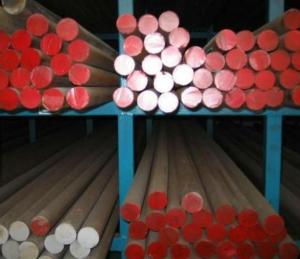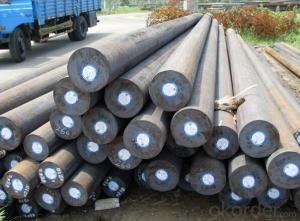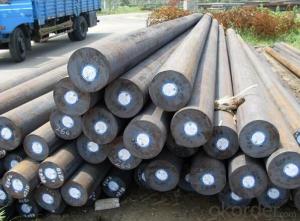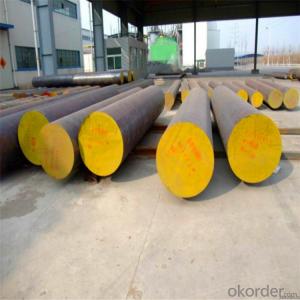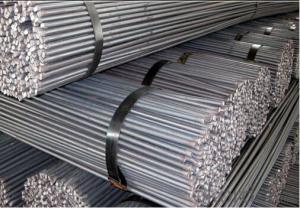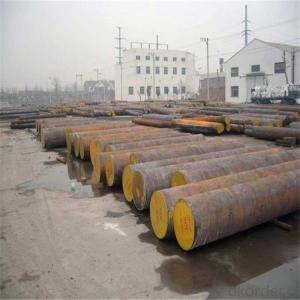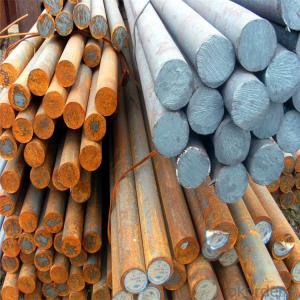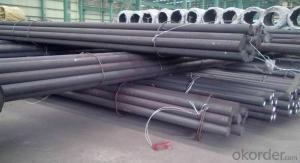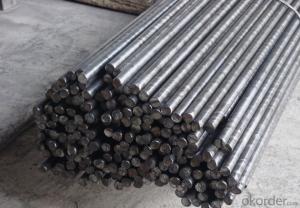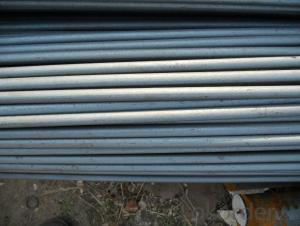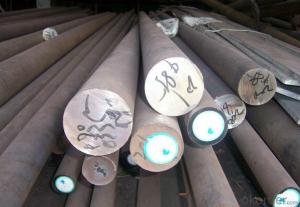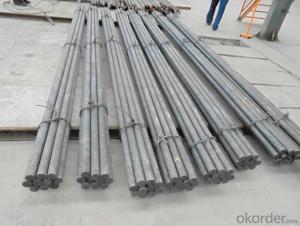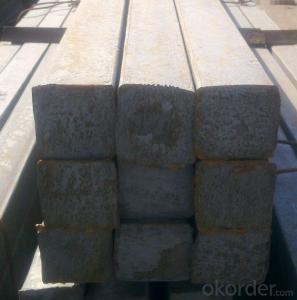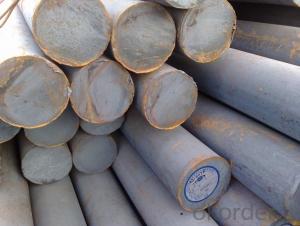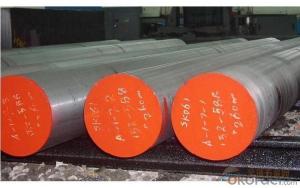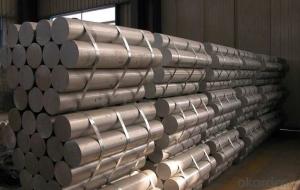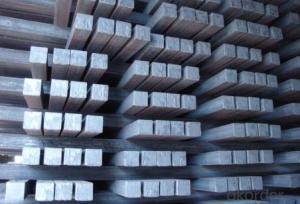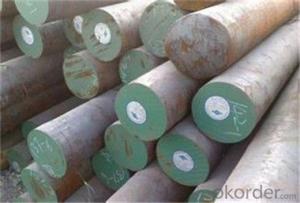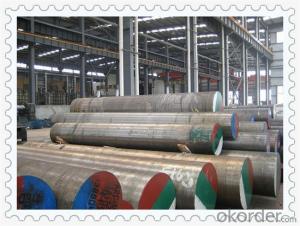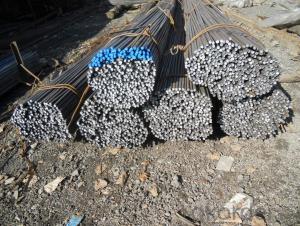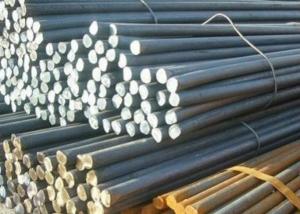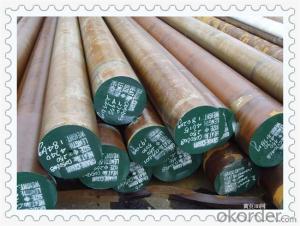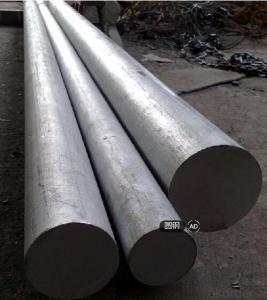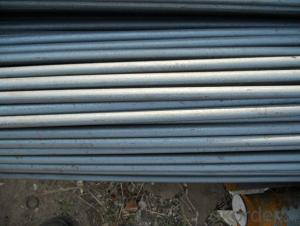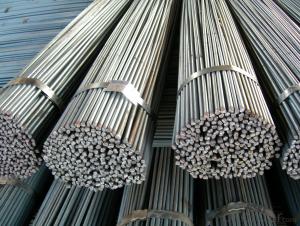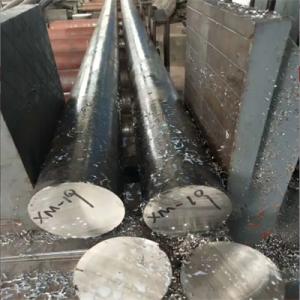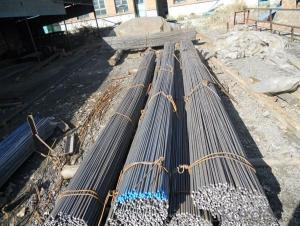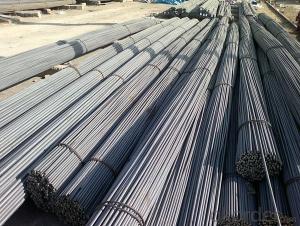4Mm Mild Steel Round Bar
4Mm Mild Steel Round Bar Related Searches
Hot Searches
Aluminum Round Bar Stock Sizes Aluminum Round Bar Stock Near Me Aluminum Round Bar Stock Sizes Aluminum Round Bar Stock Near Me4Mm Mild Steel Round Bar Supplier & Manufacturer from China
Okorder.com is a professional 4Mm Mild Steel Round Bar supplier & manufacturer, offers integrated one-stop services including real-time quoting and online cargo tracking. We are funded by CNBM Group, a Fortune 500 enterprise and the largest 4Mm Mild Steel Round Bar firm in China.Hot Products
FAQ
- The hardness of a steel round bar can be measured using various methods, with the most common method being the Rockwell hardness test. This test involves applying a specific load to an indenter and measuring the depth of the indentation left on the material's surface. To measure the hardness of a steel round bar using the Rockwell hardness test, the following steps can be followed: 1. Select the appropriate Rockwell scale for the steel being tested. The most commonly used scales for steel are HRC (Rockwell C) and HRB (Rockwell B). 2. Clean the surface of the steel round bar to remove any dirt, oil, or contaminants that could affect the accuracy of the test. 3. Place the steel round bar on a flat and stable surface, ensuring it is properly supported to prevent any movement during testing. 4. Select the appropriate indenter for the chosen Rockwell scale. For HRC, a diamond cone indenter is typically used, while for HRB, a hardened steel ball is used. 5. Apply a preliminary minor load to the indenter, typically 10 kgf (kilogram-force) for HRC and 3 kgf for HRB. This helps ensure proper contact between the indenter and the material's surface. 6. Apply the major load, which is specific to the chosen Rockwell scale. For HRC, it is typically 150 kgf, while for HRB, it is usually 100 kgf. 7. Allow the major load to dwell for a specific period, typically 15 seconds, to ensure proper indentation. 8. Release the major load while keeping the minor load applied. This allows the indenter to partially recover, reducing the depth of the indentation. 9. Measure the depth of the remaining indentation using a microscope or a specialized Rockwell hardness testing machine. The measured value corresponds to the hardness value on the chosen Rockwell scale. It is important to note that the Rockwell hardness test is just one of several methods available to measure the hardness of a steel round bar. Other methods, such as the Brinell hardness test or the Vickers hardness test, may also be used depending on the specific requirements of the application.
- Steel round bars differ from other types of steel bars primarily in their shape and versatility. Unlike other steel bars such as square or flat bars, steel round bars are cylindrical in shape and have a circular cross-section. This unique shape allows for greater flexibility and adaptability in their usage. One of the main advantages of steel round bars is their ability to withstand high levels of stress and pressure. Due to their circular shape, they distribute weight and pressure evenly, making them ideal for applications that require durability and strength. These bars are often used in construction, manufacturing, and engineering projects where structural integrity is crucial. Another key difference is the ease with which steel round bars can be machined and manipulated. Their cylindrical shape allows for easy drilling, cutting, and shaping, making them highly versatile and suitable for a wide range of applications. They can be easily welded, bent, or formed into various shapes, giving them an advantage over other types of steel bars in terms of customization. In terms of appearance, steel round bars also have a distinct visual appeal. The smooth and cylindrical surface of these bars offers a sleek and polished look, making them aesthetically pleasing in architectural and decorative applications. Overall, steel round bars stand out from other types of steel bars due to their shape, versatility, and strength. Their ability to withstand high levels of stress, ease of machining, and appealing appearance make them a popular choice in various industries.
- Yes, steel round bars are commonly used in bridge construction applications. Steel round bars offer several advantages for bridge construction, including high strength, durability, and versatility. They can withstand heavy loads and provide the necessary structural support required for bridges. Additionally, steel round bars can be easily fabricated and welded, allowing for efficient construction processes. The use of steel round bars in bridge construction also ensures that the bridges are resistant to corrosion, which is particularly important in environments exposed to moisture or harsh weather conditions. Overall, steel round bars are a suitable and commonly used material in bridge construction applications due to their strength, durability, versatility, and resistance to corrosion.
- Steel round bars can be protected from corrosion through various methods. One of the most common ways is by applying a protective coating such as paint or enamel. This coating acts as a barrier between the steel and the corrosive elements in the environment, preventing direct contact and reducing the chances of corrosion. Another effective method is through the use of galvanization. This involves coating the steel round bars with a layer of zinc. Zinc is a sacrificial metal, which means it corrodes more easily than steel. So, when the round bars are exposed to moisture or other corrosive substances, the zinc coating will corrode instead of the steel, providing an added layer of protection. Using stainless steel round bars is also a great way to prevent corrosion. Stainless steel contains a significant amount of chromium, which forms a passive layer on the surface of the steel. This passive layer acts as a shield, protecting the steel from corrosion caused by moisture or other corrosive agents. Regular maintenance and cleaning of the steel round bars is crucial in preventing corrosion. Removing dirt, dust, and other contaminants from the surface helps to maintain the protective coating or passive layer, if present. Additionally, keeping the round bars dry and storing them in a well-ventilated area can also help prevent corrosion. Lastly, proper handling and storage of steel round bars are important. They should be stored in a dry and covered area to prevent exposure to moisture and corrosive elements. Avoiding contact with other metals or materials that can cause galvanic corrosion is also essential. By implementing these protective measures, steel round bars can be effectively shielded from corrosion, ensuring their longevity and structural integrity.
- Certainly! Musical instruments can indeed be produced using steel round bars. Steel, being a versatile material, possesses a wide array of desirable attributes including strength, durability, and resonance. Although wood is typically the go-to material for crafting musical instruments, steel can be utilized in specific instances to augment the instrument's sound and performance. For instance, steel round bars can be implemented in the fabrication of various components such as keys or valves for wind instruments like saxophones or trumpets. Moreover, these bars can be employed to construct the internal support systems in instruments like guitars or cellos, thereby providing stability and enriching tonal qualities. Furthermore, steel round bars can be employed in the construction of percussion instruments such as steel drums or xylophones, where their robust and resonant attributes are highly sought after. On the whole, although wood remains the more prevalent choice in the realm of musical instrument production, steel can certainly be employed in specific scenarios to attain desired sound characteristics and structural integrity.
- A steel round bar, a lengthy metal rod with a circular shape, is usually made of strong and durable steel, an alloy composed mainly of iron and carbon. The round bar finds wide usage in industries like construction, manufacturing, and engineering, thanks to its flexibility and dependability. It is frequently employed as a structural element in buildings, as reinforcement or support in concrete structures, or as a part in machinery and equipment. The round shape enables effortless handling, machining, and welding procedures. Steel round bars are available in different diameters and lengths, and they can be further tailored or manufactured to suit particular project needs.
- No, steel round bars are not suitable for the production of bearings. Bearings require specific materials with high hardness, wear resistance, and low friction characteristics, such as bearing steels or ceramics. Steel round bars do not possess these necessary properties, making them unsuitable for bearing production.
- Several factors typically determine the price of steel round bars. The cost of raw materials, specifically steel billets or ingots used in production, is a key consideration. The price of these materials can fluctuate based on market conditions, including supply and demand dynamics and changes in input costs. The manufacturing process also plays a role in pricing. Transforming raw materials into finished round bars incurs expenses such as energy consumption, labor costs, and equipment maintenance. The complexity of the manufacturing process and the efficiency of production facilities can affect these costs. Market conditions significantly influence steel round bar pricing. Global economic trends, industry demand, and competition among suppliers all impact the market price. Manufacturers may charge a premium when there is high demand, while prices may be lower during periods of oversupply as suppliers compete for customers. The size, grade, and quality of the steel round bars can also affect pricing. Larger diameter bars or specialty grades that require additional processing steps or high-quality raw materials may be priced higher than standard sizes or lower-grade bars. Transportation costs and logistics are additional factors that influence pricing. Shipping distances, freight rates, and any handling fees can increase the overall cost of the product. In conclusion, the pricing of steel round bars is influenced by raw material costs, the manufacturing process, market conditions, the size and grade of the bars, and transportation costs. Understanding these factors helps buyers and sellers negotiate fair prices for steel round bars.

